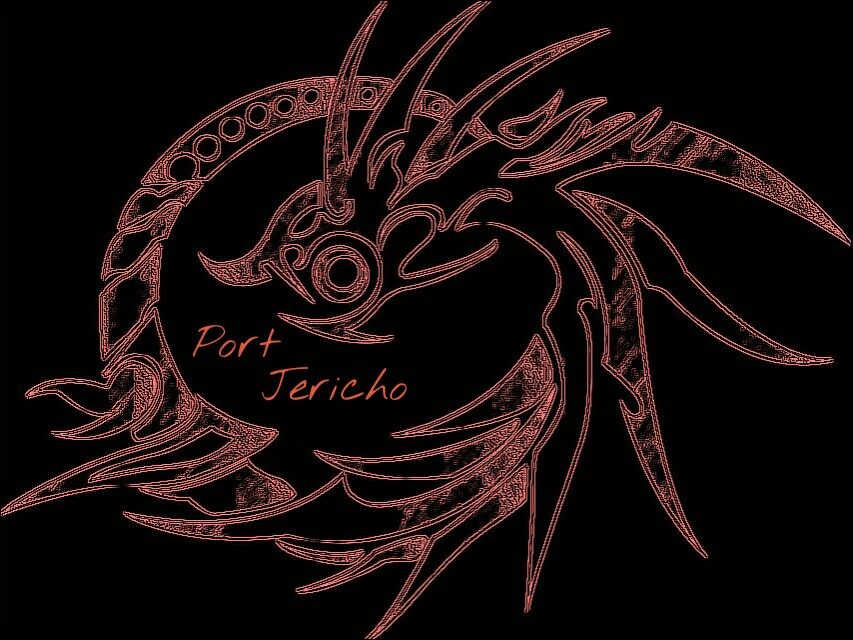WWW Wednesday is a weekly meme hosted by Sam@Taking on a World of Words.
To play answer the three ‘W’ questions listed below. Be sure to link back to her or to put the link to your post in the comment section of her blog so that others take a gander at your answers and maybe find new reads to throw in their TBR mountain.
The Three W’s are:
What are you currently reading?
What did you recently finish reading?
What do you think you’ll read next?
What I’m Currently Reading
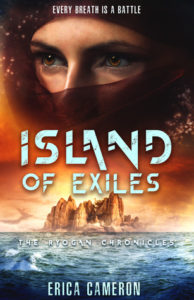
‘In Khya’s world, every breath is a battle.
On the isolated desert island of Shiara, dying young is inevitable. The clan comes before self, and protecting her home means Khya is a warrior above all else.
But when following the clan and obeying their leaders could cost her brother his life, Khya’s home becomes a deadly trap. The only person who can help is Tessen, her lifelong rival and the boy who challenges her at every turn. The council she hoped to join has betrayed her, and their secrets, hundreds of years deep, reach around a world she’s never seen.
To save her brother’s life and her island home, her only choice is to trust Tessen, turn against her clan, and go on the run—a betrayal and a death sentence.’
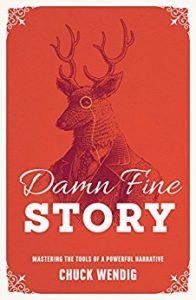
‘HOOK YOUR AUDIENCE WITH UNFORGETTABLE STORYTELLING
What do Luke Skywalker, John McClane, and a lonely dog on Ho‘okipa Beach have in common?
Simply put, we care about them.
Great storytelling is making readers care about your characters, the choices they make, and what happens to them. It’s making your audience feel the tension and emotion of a situation right alongside your protagonist. And to tell a damn fine story, you need to understand why and how that caring happens.
Using a mix of personal stories, pop fiction examples, and traditional storytelling terms, New York Times best-selling author Chuck Wendig will help you internalize the feel of powerful storytelling. In Damn Fine Story, you’ll explore:
Freytag’s Pyramid for visualizing story structure – and when to break away from traditional storytelling forms
Character relationships and interactions as the basis of every strong plot – no matter the form or genre
Rising and falling tension that pulls the audience through to the climax and conclusion of the story
Developing themes as a way to craft characters with depth
Whether you’re writing a novel, screenplay, video game, comic, or even if you just like to tell stories to your friends and family over dinner, this funny and informative guide is chock-full of examples about the art and craft of storytelling – and how to write a damn fine story of your own.’
What I Recently Finished
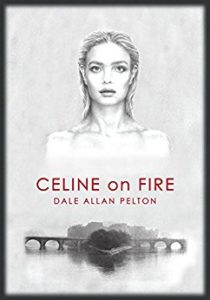
‘“Céline on Fire” poses the question, why read history? Set during the Cold War, “Céline” is a coming of age story in 1950s Paris. Céline Colbert, 14, a dancer, her sister Yvonne, 28, professor of philosophy and history at the Sorbonne, share a taxi in the rain with Giovanni Sandretti, 23, an Italian-American trumpet player born in Viterbo, Italy. In the Parisian worlds of jazz, flamenco, and tango, Giovanni becomes Yvonne’s lover and Céline’s friend. Each of the characters share the narration from chapter to chapter like a jazz trio swapping riffs as they improvise on a common theme. Bertrand Russell said, “To understand an age or a nation we must understand its philosophy, and to understand its philosophy we must ourselves be in some degree philosophers.” The lesson of “Céline on Fire” is that it is our responsibility for each of us to be that philosopher.
After a shattering tragedy, Céline struggles to find herself as both an artist and a woman. In a time when everyone went out dancing, and Parisians endlessly debated politics in the cafés, the novel recreates the era of Ginger Rogers and Fred Astaire, Cyd Charisse and Audrey Hepburn, with dance sequences of ballet, jazz, ballroom, Latin and tango, reprising the 1950’s musicals of Gene Kelly’s “American in Paris.” Haunted by heartbreak, Céline is a resilient role model for young women trying to find themselves. Intelligent yet sensual, disciplined but burdened with grief—falling down then climbing back to her feet—Céline saves herself through dance.
On Giovanni’s jazz tour behind the Iron Curtain, fans in Poland, Hungary, Czechoslovakia and Yugoslavia share stories of their quest for freedom. Attila and Zizi in Budapest recount the terror of the Hungarian Revolution of 1956, and Les Gordon, the leader of the group, an African-American living in Paris to escape racism, tells of the savage race massacre in Tulsa, and the heartbreaking Indian Removal under President Andrew Jackson confiscating the lands of the Cherokee, Choctaw, Chickasaw, Seminole and Muskogee-Creek nations, forcing them through snow and ice to Oklahoma on the Trail of Tears where one out of four died, raising the question, how do we forgive mass murder? Is atonement possible for a nation’s deeds in the past?
Written by an artist rather than a historian, “Céline” explores historical and philosophical ideas through the means of conversation—history viewed by an artist rather than a scholar. “Céline” shows how the literature of 19th century Prussia informed 20th century Germany; the 6th century BC Shinto myth of Amaterasu, goddess of the sun, created the cult of the Emperor in 20th century Japan; the Dreyfus Affair in France in 1894 resulting in the creation of Israel in 1948; the creation in 1921 of Syria, Lebanon, Iraq, Palestine and Israel and the struggle between Shias and Wahhabiya Sunnis, Palestinians and Israelis.
“Céline” chronicles the First World War when nationalist chauvinism was responsible for devouring seventeen million lives. In the 21st century, nationalism is rising again—in Russia, the European Union and in our own country as well. Nationalism rises then recedes with time, but man’s instinct for, “us against the foreigners,” never dies—lying silently like the plague sleeping until it awakens to murder again.
The book tells of Senator McCarthy 1950’s witch hunt for traitors in our government, bringing to mind the words of Michel de Montaigne, ‘There is no passion as contagious as that of fear.’ Fear is the mother of war, fascism and genocide. “Céline” shows how a demagogue can rise to power in a democracy by unleashing that fear, seizing power by creating a world of unreality. Gifted in the Procrustean solution, the demagogue processes data to fit a preconceived notion—he invents the truth. While recounting the attacks against democracy in the 20th century, “Celine on Fire” tells a sweeping tale of romance and a passion for music and dance.’

‘The Stories of Edgar Allan Poe is a brilliant collection of some of his best-known stories: The Tell Tale Heart (a murder’s haunting guilt), The Cask of Amontillado (a story of brilliant revenge), and The Fall of the House of Usher (an ancient house full of very dark secretes). Also included in this collection are The Mask of the Red Death (horrors of ‘the Plague’), and the most famous of all his poems: The Raven (a lover’s decline into madness). Best read in a dimly-lit room with the curtains drawn, Poe’s brilliant works come to life in darkly thrilling ways in this Manga Classic adaptation.‘
What I Hope to Read Next
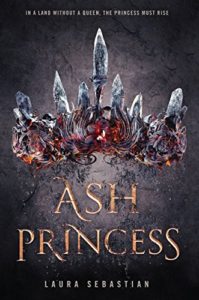
‘For fans of Victoria Aveyard’s Red Queen and Sabaa Tahir’s An Ember in the Ashes, Ash Princess is an epic new fantasy about a throne cruelly stolen and a girl who must fight to take it back for her people.
Theodosia was six when her country was invaded and her mother, the Fire Queen, was murdered before her eyes. On that day, the Kaiser took Theodosia’s family, her land, and her name. Theo was crowned Ash Princess–a title of shame to bear in her new life as a prisoner.
For ten years Theo has been a captive in her own palace. She’s endured the relentless abuse and ridicule of the Kaiser and his court. She is powerless, surviving in her new world only by burying the girl she was deep inside.
Then, one night, the Kaiser forces her to do the unthinkable. With blood on her hands and all hope of reclaiming her throne lost, she realizes that surviving is no longer enough. But she does have a weapon: her mind is sharper than any sword. And power isn’t always won on the battlefield.
For ten years, the Ash Princess has seen her land pillaged and her people enslaved. That all ends here.’

‘In this gripping debut novel, seventeen-year-old Cat must use her gene-hacking skills to decode her late father’s message concealing a vaccine to a horrifying plague.
Catarina Agatta is a hacker. She can cripple mainframes and crash through firewalls, but that’s not what makes her special. In Cat’s world, people are implanted with technology to recode their DNA, allowing them to change their bodies in any way they want. And Cat happens to be a gene-hacking genius.
That’s no surprise, since Cat’s father is Dr. Lachlan Agatta, a legendary geneticist who may be the last hope for defeating a plague that has brought humanity to the brink of extinction. But during the outbreak, Lachlan was kidnapped by a shadowy organization called Cartaxus, leaving Cat to survive the last two years on her own.
When a Cartaxus soldier, Cole, arrives with news that her father has been killed, Cat’s instincts tell her it’s just another Cartaxus lie. But Cole also brings a message: before Lachlan died, he managed to create a vaccine, and Cole needs Cat’s help to release it and save the human race.
Now Cat must decide who she can trust: The soldier with secrets of his own? The father who made her promise to hide from Cartaxus at all costs? In a world where nature itself can be rewritten, how much can she even trust herself?’
